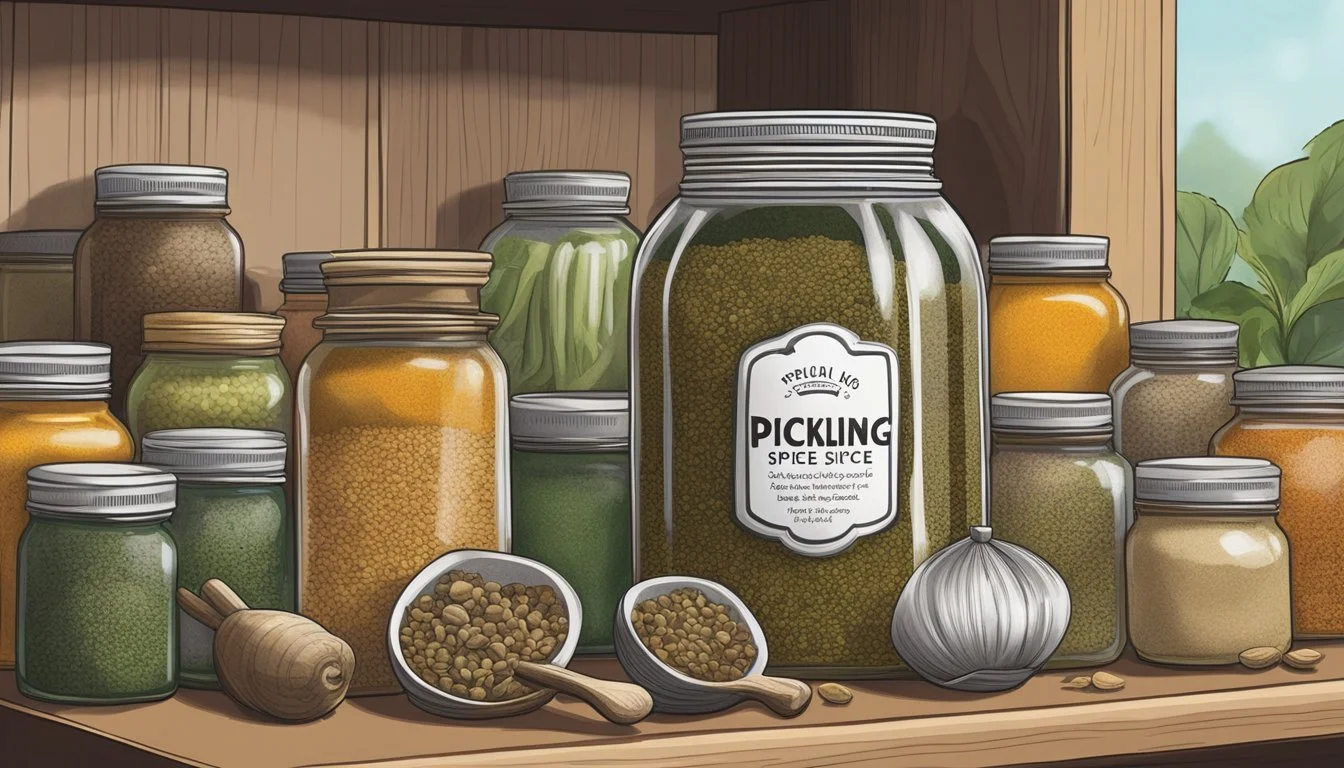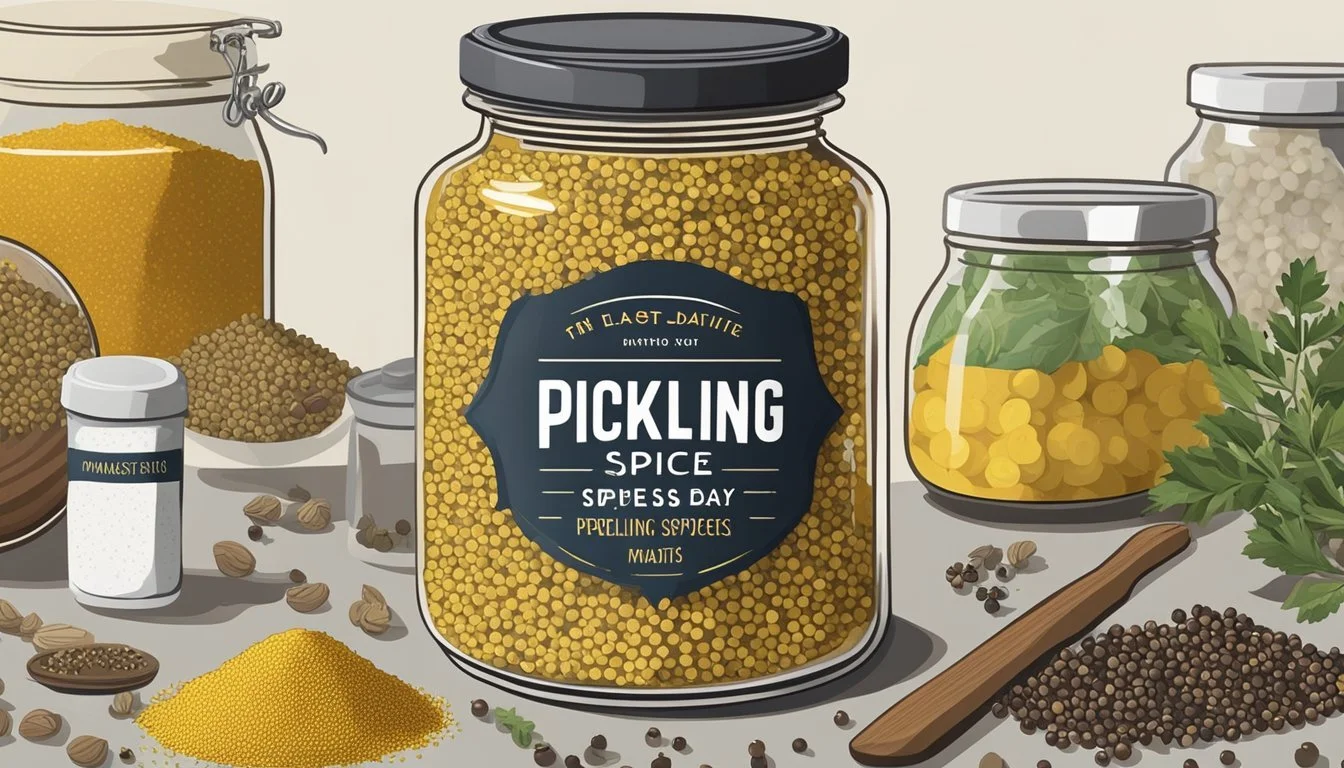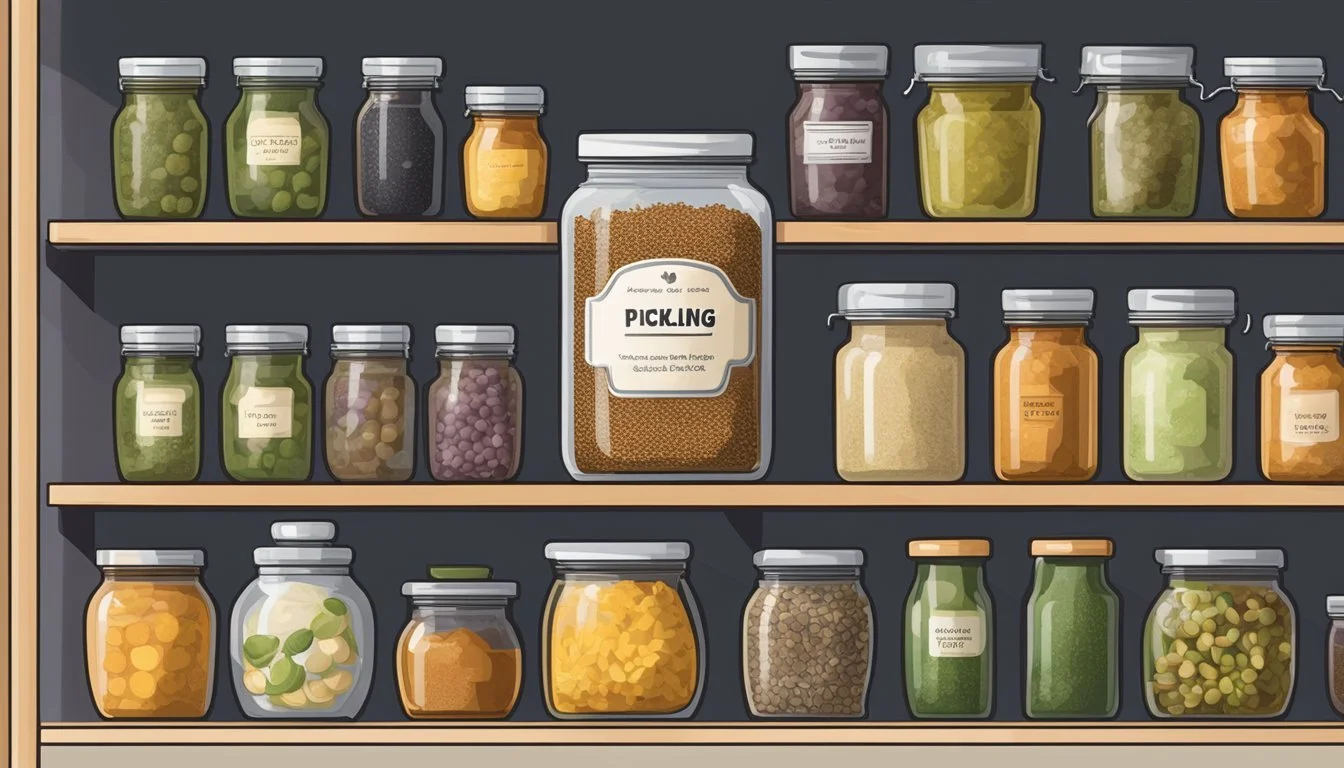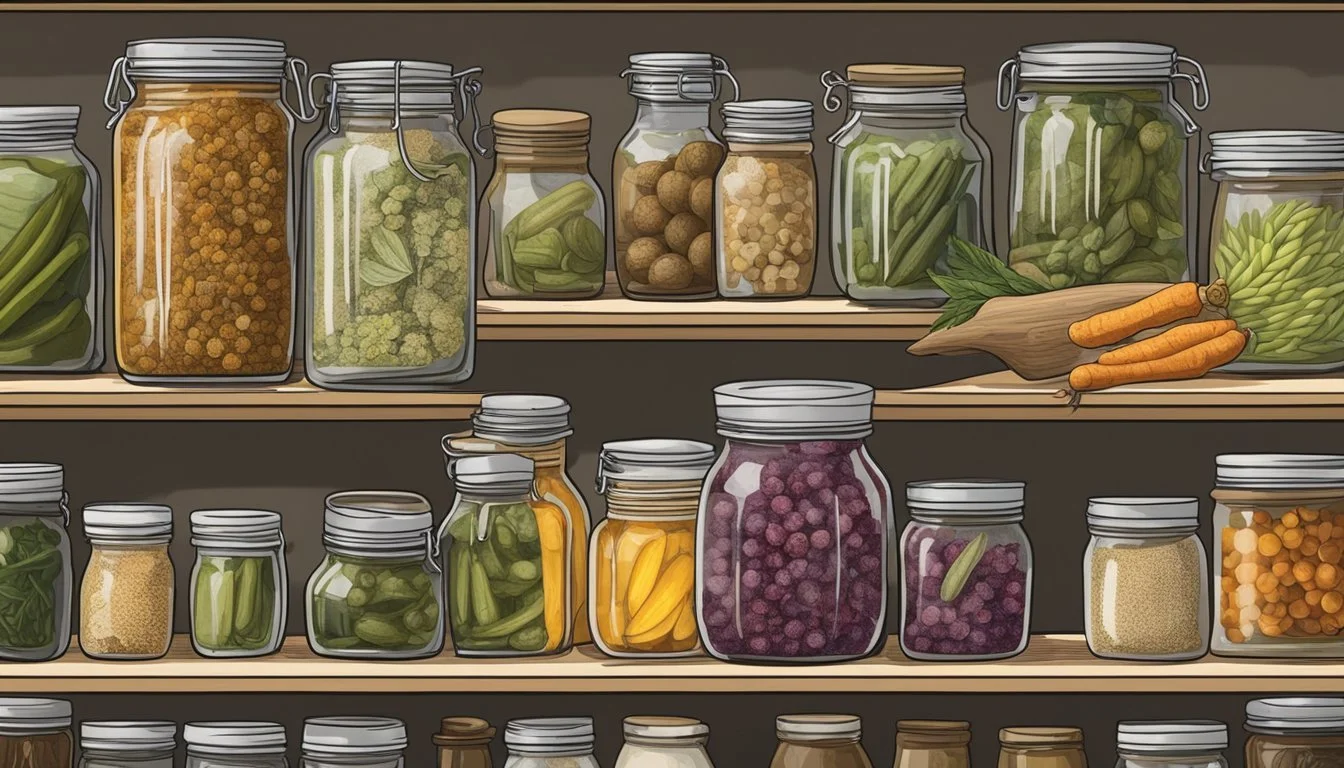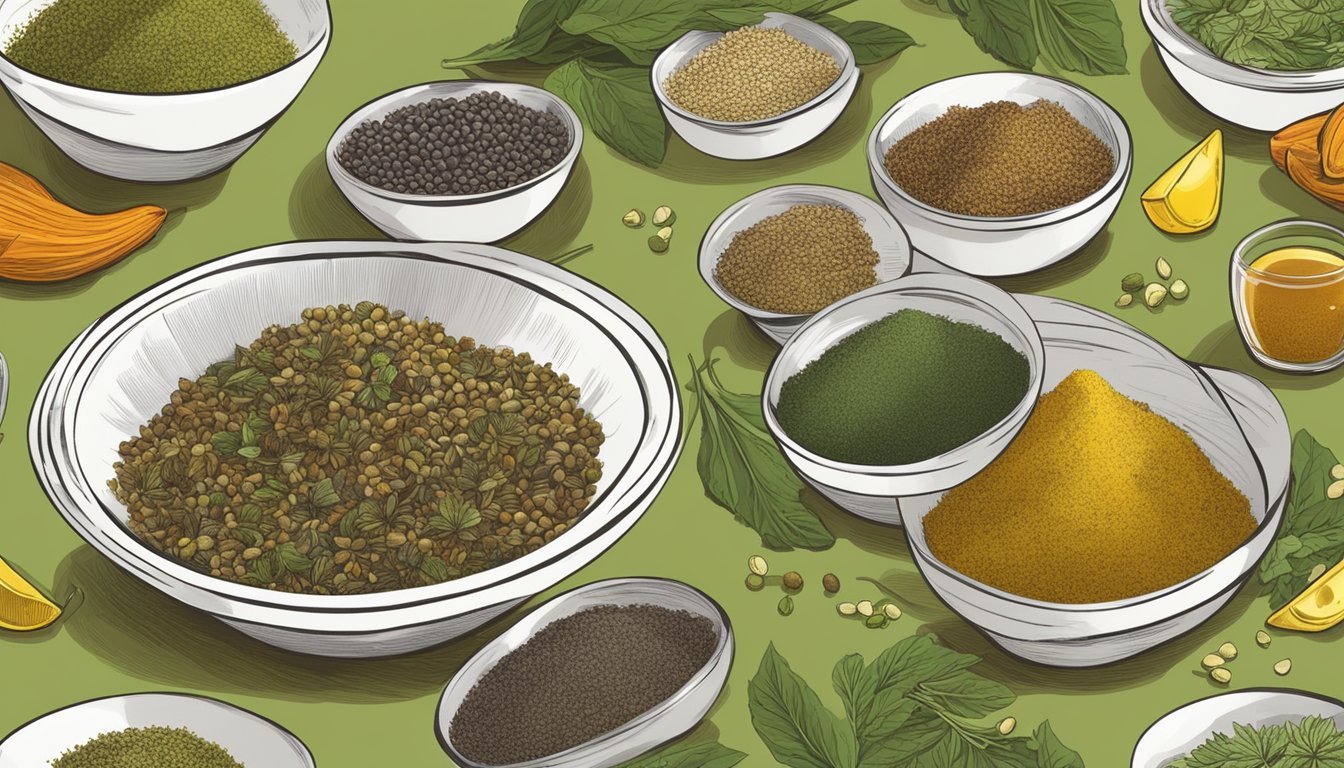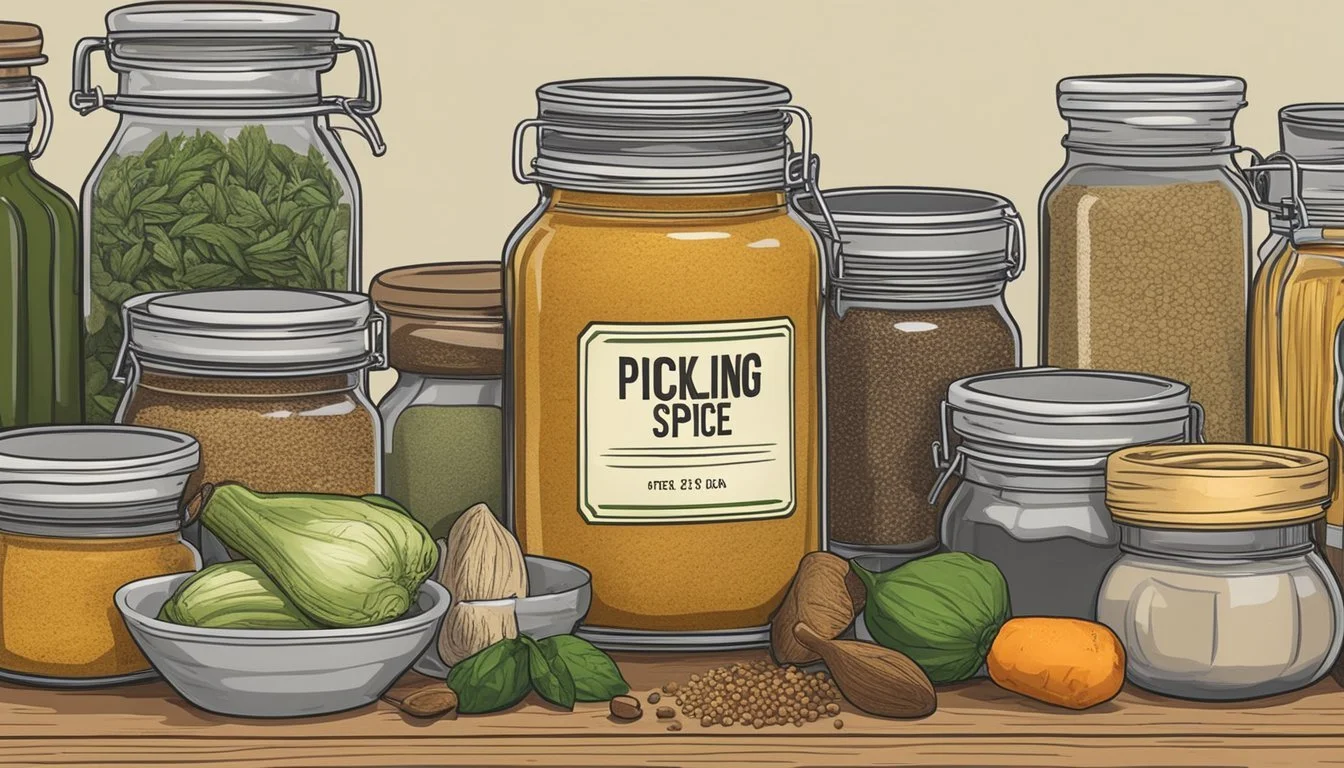How Long Does Pickling Spice Last?
Shelf Life and Storage Tips
Pickling spice is a robust combination of various whole or crumbled spices, most commonly used for the preservation process of pickling. This spice blend, essential for imparting complex flavors to pickled fruits and vegetables, includes a range of spices such as mustard seeds, (how long do seeds last?) coriander, cloves, and peppercorns. While pickling spice is known for its durability, especially during the lengthy pickling process, its shelf life isn't indefinite. Over time, the potency and aroma can diminish, even if the spice mix does not show signs of spoilage in the traditional sense.
When assessing the freshness of pickling spice, one should note that a strong, aromatic smell usually indicates that the spice is still effective. However, if the aroma weakens or dissipates entirely, it may be time to replace it. It is also worth considering the storage conditions of the spice blend, as they can significantly impact its longevity. Spices should be stored in a cool, dry place away from direct sunlight to maintain their quality. With proper storage, pickling spice can remain effective for a considerable period, but it is ultimately the sensory indicators of aroma and taste that dictate its readiness for use.
Understanding Pickling Spice Components
Pickling spice is a unique and robust blend of various whole spices that contribute to the overall flavor and preservation qualities of pickled foods. This mix not only imparts a distinct taste but also ensures that pickled fruits and vegetables maintain their crispness and longevity.
Common Spices in Pickling Mixes
The typical components of pickling spice include a diverse range of spices, each offering its unique properties to the mix. Essential spices commonly found in these blends are:
Mustard seeds: They impart a spicy and tangy flavor.
Allspice: Known for its combination of cinnamon, nutmeg, and clove notes.
Cinnamon sticks: (how long do cinnamon sticks last?) They add a warm and sweet aroma.
Ginger: Provides a pungent and spicy kick.
Cloves: Characterized by their strong, aromatic essence.
Coriander seeds: Offer a lemony citrus flavor when crushed.
Bay leaves: Contribute a subtle aroma and slightly bitter taste.
Peppercorns: Introduce a sharp heat.
Red pepper flakes (how long do red pepper flakes last?) and Dill (how long does dill last?): Often included in the mix for additional layers of heat and earthy notes.
Flavor Profile and Characteristics
Pickling spice is characterized by a complex, well-rounded profile that combines sweet, spicy, and warm flavors. These attributes stem from the individual components of the blend:
Aroma: The fragrance is crucial in determining the freshness and potency of the spice mix. A strong aromatic smell signifies quality, whereas a weak or absent scent may indicate that it's time to replace it.
Flavor: Typically, it is the combination of the spicy flavor from mustard seeds and peppercorns, the warm sweetness from cinnamon and allspice, and the citrusy hints from coriander that defines the flavor of a pickling spice blend.
Potency: Over time, the intensity of the spice blend's character will diminish. Freshness is key in a pickling spice mix to ensure the most impactful flavor and aroma.
By understanding the components that make up pickling spice and their individual characteristics, one can appreciate the intricate balance they bring to pickling as a culinary process.
The Pickling Process
Pickling transforms ingredients, primarily vegetables, into flavorful preserved foods. This staple of culinary traditions worldwide relies heavily on the careful selection of spices and the accurate preparation of brine.
Ingredients and Preparation
The initial step in the pickling process is gathering ingredients and ensuring their proper preparation. A basic pickling recipe typically includes:
Vegetables: Common choices are cucumbers for pickles and carrots for a sweet, tangy treat.
Vinegar: This acidic liquid acts as a preservative and flavoring agent.
Brine: A solution of vinegar, water, and salt, sometimes with sugar added, depending on the recipe.
Pickling spice: A blend of whole or crumbled spices which may include mustard seed, bay leaves, cloves, cinnamon, and others.
To start, vegetables are cleaned, and possibly sliced, before being immersed in the hot brine. Packing them tightly in jars is important to ensure that they are completely covered by the pickling solution. After the addition of brine, the filled jars are typically sealed and left to cool, allowing the flavors to meld.
Role of Spices in Pickling
Spices are the quintessential seasoning elements that define the pickling process. They perform several functions:
Flavor: Spices imbue the brine with depth and complexity that is then absorbed by the vegetables.
Preserving: Certain spices have antimicrobial properties that can help in preserving the pickles.
Heat: Spices like peppercorns or red chili flakes add a kick, which can be adjusted according to taste.
A homemade pickling spice blend allows for customization and can be made by combining individual spices tailored to personal preferences or specific recipes. When added during cooking, the spice mixture often is enclosed in cheesecloth for easy removal after the heat treatment. This ensures a uniform infusion of flavors without leaving residue on the pickled vegetables. (What wine goes well with pickled vegetables?)
Storage and Shelf Life
Preserving the freshness and flavor of pickling spice is essential for any culinary enthusiast. Proper storage conditions can significantly extend shelf life, while knowing the signs of spoilage ensures the spices used are of the best quality.
Optimal Storage Conditions
Airtight Containers: Storing pickling spice in airtight containers is key to preventing moisture from seeping in, which can lead to clumping and mold. Glass jars with tight seals are the preferred choice, as they also prevent odors from contaminating the spice mix.
Location: A pantry or cupboard away from direct heat, light, and sunlight creates an ideal storage environment. It’s important that the area is cool and dry, as fluctuating temperatures and humidity can deteriorate the spices quickly.
Avoiding Contaminants: Keeping pickling spices away from strong-smelling foods in both the pantry and refrigerator will help maintain their original aroma as spices can easily absorb surrounding odors.
Temperature: For prolonged storage, a refrigerator may be used, but this is usually not necessary if the spices are kept in a consistently cool dry place.
Detecting Spoilage
Loss of Aroma: A strong, aromatic smell indicates freshness. If the pickling spice has a weak or nonexistent scent, its potency has likely diminished.
Visible Spoilage: Any signs of mold or changes in texture can indicate that the pickling spice has been exposed to too much moisture or air and should not be used.
Whole spices typically last for about 3-4 years.
Ground spices may last from 2 to 4 years.
Dried herbs within the mix are usually good for 1 to 3 years, but their shelf life can be on the lower end of that scale.
These timelines assume optimal storage conditions; deviations will likely reduce the spice's potency and potentially lead to spoilage. Regular checks for aroma and visual signs of spoilage can help ensure that the pickling spices are still good to use.
Impact on Food and Recipes
Pickling spice is a versatile seasoning blend that markedly enhances the taste of various foods, bridging the gap between mere ingredients and gastronomic delights.
Enhancing Flavor in Various Dishes
Pickling spice traditionally lends its robust flavor to preserved vegetables, such as cucumbers, beets, and okra, but its use in culinary applications extends beyond pickling. The blend often contains mustard seeds, allspice berries, coriander seeds, cardamom, and crushed red pepper flakes, which are known to impart a spicy and complex flavor profile. Chefs may adjust the specific mix of spices to suit the dish's requirements or their taste preferences.
Meat dishes, notably corned beef, can be dramatically transformed by the addition of pickling spice during the cooking process. The spices penetrate the meat, amplifying its inherent flavors and introducing new ones. In stews, pickling spice can be a game-changer — it infuses the broth and ingredients with an aromatic depth that is both comforting and sophisticated.
When pickling spice is applied to recipes, one must consider the impact on taste and ensure a balanced seasoning. Onions, for example, may absorb the spices differently than cucumbers, which could result in a need to adjust the quantity of spice used.
Bold use of pickling spice in a variety of dishes showcases its power to enhance flavor, making it an invaluable asset in both traditional and innovative recipes.
Health and Nutrition
When considering the health and nutrition of pickling spices, it's important to note that while they contribute aromatic flavors to preserves, they also offer nutritional benefits depending on their specific components.
Nutritional Contributions of Pickling Spices
Pickling spices typically consist of a blend of various seeds, berries, and aromatic components, each contributing unique nutritional values. Garlic, often included in pickling for its robust flavor, is renowned for its health benefits. It is low in calories, but rich in vitamin C, vitamin B6, and manganese. Dill seed is another common pickling ingredient, offering a supply of essential vitamins, minerals, and dietary fiber.
Cardamom seeds, known for their slightly sweet and spicy flavor profile, provide essential nutrients such as iron, magnesium, and zinc. Celery seeds are low in calories and offer an abundance of antioxidants, beneficial for reducing inflammation. Additionally, they are a source of calcium, manganese, and iron.
Juniper berries, with their distinct pine-like flavor, are not traditional berries but the female seed cones from juniper plants. They contain compounds that may aid in digestion and provide vitamin C.
Below is a table summarizing the key nutritional components of common pickling spices:
Spice Key Nutrients Caloric Content Garlic Vitamin C, Vitamin B6, Manganese Low Dill Seed Dietary Fiber, Vitamins, Minerals Low Cardamom Seeds Iron, Magnesium, Zinc Low Celery Seeds Antioxidants, Calcium, Manganese Low Juniper Berries Vitamin C, Digestive Aid Low
It's important to remember that while these spices offer health benefits, the amounts typically used in pickling are small, so contribution to daily nutritional intake is minimal. However, they can complement a balanced diet by providing a variety of compounds beneficial for overall health.
Customizing Pickling Spice Blends
Crafting homemade pickling spice blends allows for personalization of flavors to match specific pickling preferences. Custom blends provide control over the taste and heat level of pickled vegetables, ensuring a fresh, unique outcome.
Homemade Mixes and Variations
To create a homemade pickling spice mix, one starts by selecting a base of essential whole spices. Mustard seed, black peppercorns, and allspice are commonly used. To this foundation, a variety of other spices can be added to customize the flavor. Dill seeds and whole cloves impart a classic pickling taste, while fennel (how long does fennel last?) seeds offer an anise-like sweetness. For a touch of warmth, consider adding dried ginger (how long does dried ginger last?) or even a pinch of ground ginger.
Those who desire a spicier kick can include chili peppers in their blend. It's important to note that pickling spice should contain no fine powders as they can cloud the brine. Instead, opt for coarsely ground or crushed spices.
Adding fresh garlic to the mix just before pickling can enhance the aroma and flavor, giving a robust profile to the pickled vegetables. Nutmeg, used sparingly, can add depth to the flavor profile of more complex blends.
For a spicy pickle, the amount of heat can be adjusted with the type and quantity of chili peppers used.
When mixing your spices, it is also crucial to consider the role of pickling salt. This type of salt is free of iodine and anti-caking agents, which can affect the brine's clarity and the pickles' flavor and texture.
Those crafting their own blends should also remember that pickling spices are part of a larger recipe, and the flavors should complement the pickled vegetables and the brine's acidity. Experimenting with small batches of pickle recipes is a practical approach to refining a custom spice blend.
In summary, a tailored pickling spice mix can transform the experience of preservation, providing a signature touch to home-preserving endeavors.
Frequently Asked Questions
When delving into the longevity and use of pickling spice, one may encounter various questions regarding its shelf life and proper storage methods. This section addresses common concerns to ensure optimal freshness and flavor of the spice blend.
Common Concerns and Inquiries
How long does pickling spice last before it expires?
Pickling spice typically retains its potency for about 1 to 4 years. Whole spices within the blend, like dried chili peppers, usually last longer than ground spices such as paprika.
Can the color or texture indicate if the pickling spice has gone bad?
Although pickling spice does not spoil in the traditional sense, a fading color or a dull aroma can suggest that the spices have lost their strength. The texture should remain consistent; any clumping may indicate moisture has entered the container.
What is the ideal method for storing pickling spice to extend its shelf life?
It should be kept in a tightly sealed container within a cool, dark place such as a spice cabinet, away from heat and light to maintain its quality.
Does pickling spice work well with foods other than pickles?
Yes, it can enhance the flavors of a variety of dishes, including fish, soups, cauliflower, and green beans.
Is it possible to make a pickling spice recipe at home?
One can make a custom pickling spice blend at home by combining individual whole and ground spices according to personal preference or specific recipes.

